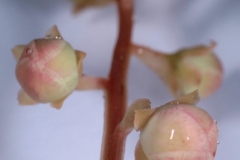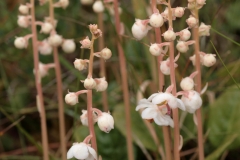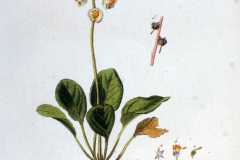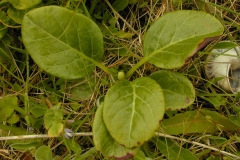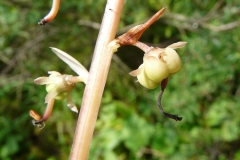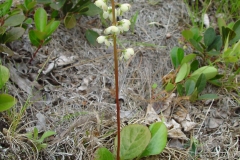| Round-leaved wintergreen Quick Facts | |
|---|---|
| Name: | Round-leaved wintergreen |
| Scientific Name: | Pyrola rotundifolia |
| Name | Round-leaved wintergreen |
|---|---|
| Scientific Name | Pyrola rotundifolia |
| Common/English Name | False Wintergreen, Canker Lettuce, Shin Leaf, Pear Leaf Pyrola |
| Name in Other Languages | German: Rundblättriges Wintergrün; Finnish: Isotalvikki; Swedish: Isotalvikki, Vitpyrola, Vintergröna; French: Pyrole à feuilles rondes; Dutch: Rond wintergreen; English: Round-leaf wintergreen, Round-leaved wintergreen, Wintergreen |
| Plant Growth Habit | Plant Growth Habit |
| Medicinal part | Whole plant |
| Flowering Season | July to September |
Externally
The decoction is much used in all skin diseases and as a poultice for ulcers, swellings, boils, felons and inflammations.
Russian Experience
In Russia Groushanka (Roundleaf) can be found growing among bushes of the Coniferous forests. They use the herb in Folk Medicine, homoepathically and clinically in the the form of teas, decoctions, Nastoika, extracts for throat conditions, stomach and back pain as a result of too much and too heavy lifting, and scurvy.
Externally
As application for recent and long-standing skin lesions.
Medicinal uses
- Decoction is used for treating skin ailments, used as a gargle and wash for eyes.
- Use it internally for treating epilepsy and other nervous afflictions.
- Take the decoction internally for urinary affections, relieve irritation and useful for hematuria, gravel and bladder ulceration.
References:
https://www.henriettes-herb.com/eclectic/kings/pyrola.html
https://practicalplants.org/wiki/Pyrola_rotundifolia
http://www.naturalmedicinalherbs.net/herbs/p/pyrola-rotundifolia=round-leaved-wintergreen.php
https://www.itis.gov/servlet/SingleRpt/SingleRpt?search_topic=TSN&search_value=894531#null



